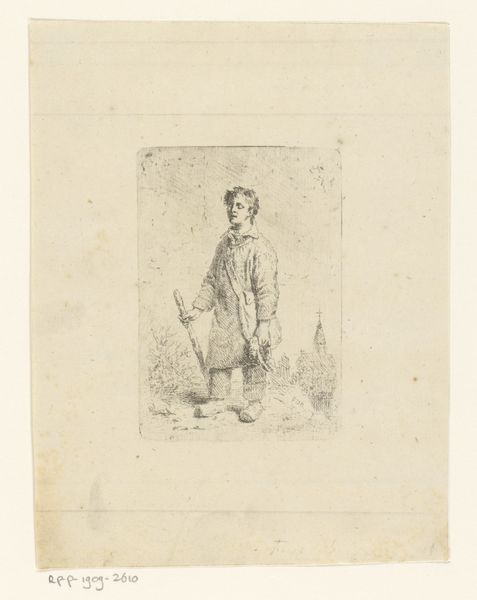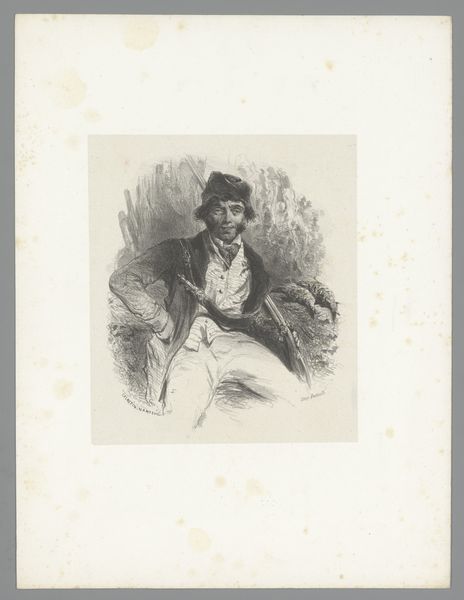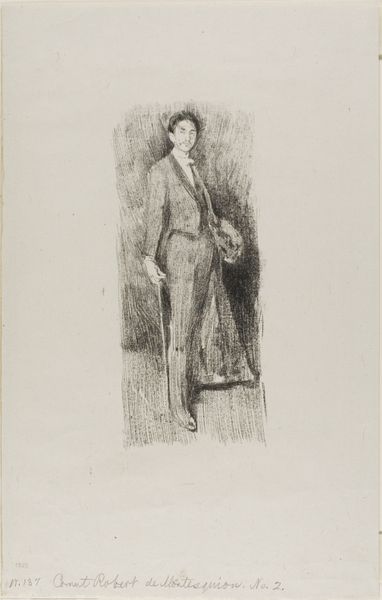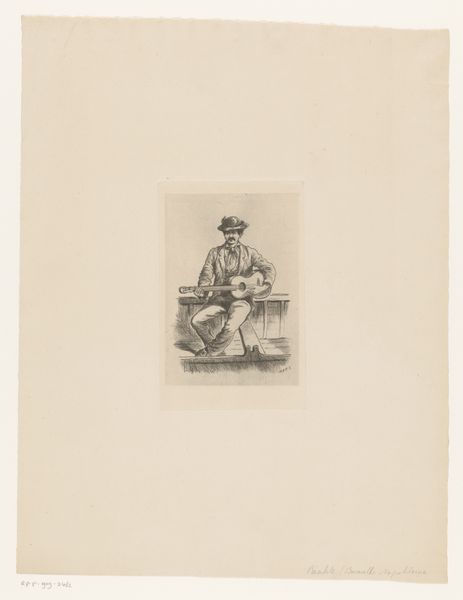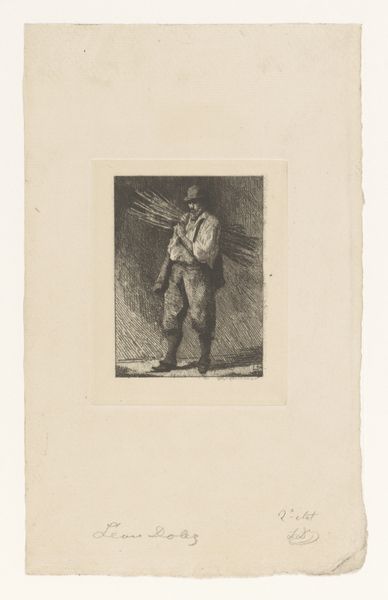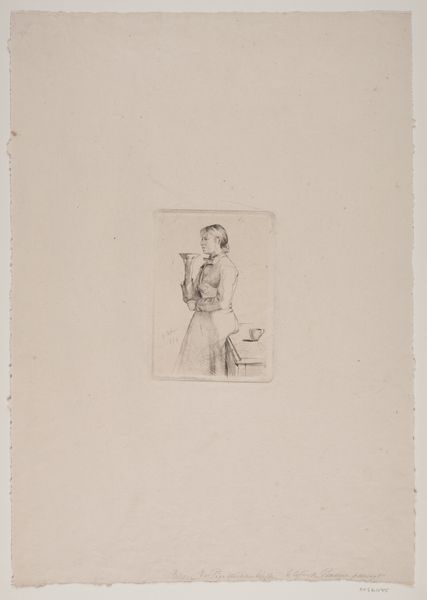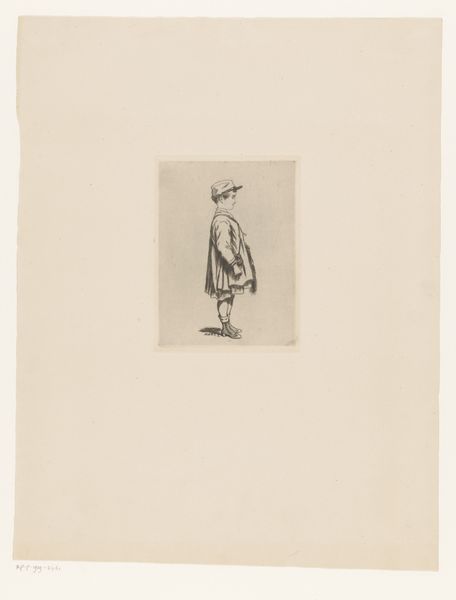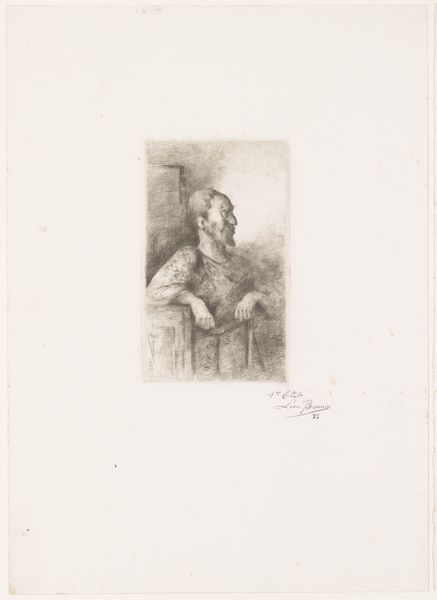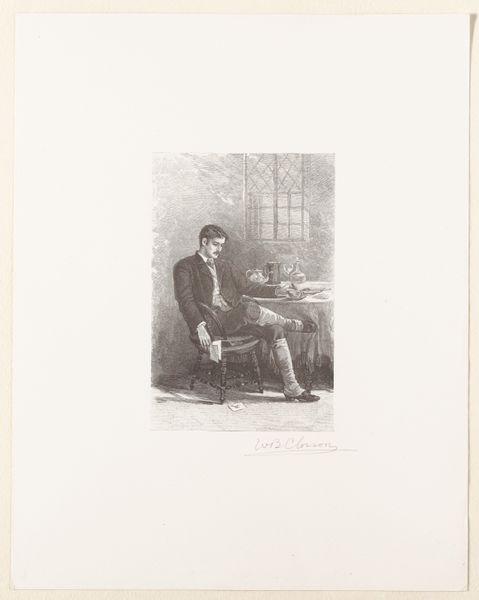
drawing, print, etching, intaglio
#
portrait
#
drawing
# print
#
etching
#
intaglio
#
figuration
Dimensions: height 173 mm, width 84 mm
Copyright: Rijks Museum: Open Domain
This self-portrait was etched by Eugène Bejot, likely around the turn of the 20th century. The etching process involves covering a metal plate with a waxy, protective ground, then drawing through it to expose the metal. Immersing the plate in acid then bites away the exposed lines, leaving an image that can be inked and printed. Notice how Bejot’s deft draftsmanship captures the texture of his jacket and the fall of light on his trousers. But the most striking aspect of the print is its emphasis on process. The very fine lines, so characteristic of etching, are clearly visible, reminding us of the labor involved in creating the image. Etching was a relatively accessible medium, and Bejot’s choice of it may reflect a desire to democratize art, moving away from the grand, academic styles of painting and sculpture. It emphasizes the value of craft and skill, challenging traditional hierarchies within the art world. In this way, Bejot's "Zelfportret" not only captures a likeness but also embodies a shift in artistic values.
Comments
No comments
Be the first to comment and join the conversation on the ultimate creative platform.
